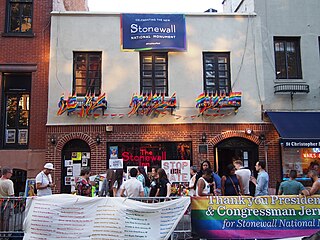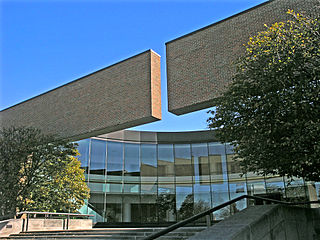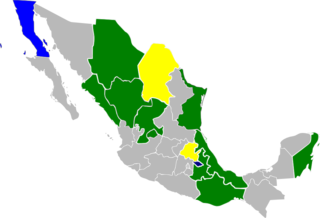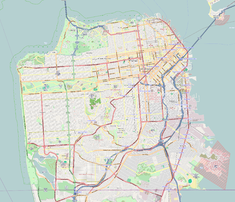
The San Francisco LGBT Community Center, also known as the SF LGBT Center, is a nonprofit organization serving the lesbian, gay, bisexual, transgender, and queer community of San Francisco, California, and nearby communities, located at 1800 Market Street in San Francisco. The mission of the SF LGBT Center is "to connect the diverse LGBTQ+ community to opportunities, resources, and each other to achieve a stronger, healthier, and more equitable world for LGBTQ+ people and our allies."

Julia Morgan was an American architect and engineer. She designed more than 700 buildings in California during a long and prolific career. She is best known for her work on Hearst Castle in San Simeon, California.

The Stonewall Inn is a gay bar and recreational tavern at 53 Christopher Street in the Greenwich Village neighborhood of Manhattan in New York City. It was the site of the 1969 Stonewall riots, which led to the gay liberation movement and the modern fight for LGBT rights in the United States. When the riots occurred, Stonewall was one of the relatively few gay bars in New York City. The original gay bar occupied two structures at 51–53 Christopher Street, which were built as horse stables in the 1840s.

Thomas Fallon (1825–1885) an Irish-born Californian politician, best known for serving as 10th Mayor of San Jose. Fallon remains a controversial figure in San Jose's history, owing to his role in the American Conquest of California.

Bernard Ralph Maybeck was an American architect. He worked primarily in the San Francisco Bay Area, designing public buildings, including the Palace of Fine Arts in San Francisco, and also private houses, especially in Berkeley, where he lived and taught at the University of California. A number of his works are listed on the National Register of Historic Places.

The Peralta Adobe, also known as the Luis María Peralta Adobe or the Gonzales-Peralta Adobe, is the oldest building in San Jose, California. The adobe was built in 1797 by José Manuel Gonzeles, one of the founders of San Jose, and is named after Luis María Peralta, its most famous resident.

Joseph Leopold Eichler was a 20th-century post-war American real estate developer known for developing distinctive residential subdivisions of mid-century modern style tract housing in California. He was one of the influential advocates of bringing modern architecture from custom residences and large corporate buildings to general public availability. His company and developments remain in the Greater San Francisco Bay Area and Greater Los Angeles.

Greene and Greene was an architectural firm established by brothers Charles Sumner Greene (1868–1957) and Henry Mather Greene, influential early 20th Century American architects. Active primarily in California, their houses and larger-scale ultimate bungalows are prime exemplars of the American Arts and Crafts Movement.

Columbus Tower, also known as the Sentinel Building, is a mixed-use building in San Francisco, California, completed in 1907. The distinctive copper-green Flatiron style structure is bounded by Columbus Avenue, Kearny Street, and Jackson Street; straddling the North Beach, Chinatown, and Financial District neighborhoods of the city. Much of the building is occupied by film studio American Zoetrope, and the ground floor houses a cafe named after the company. The Sentinel Building is listed as San Francisco Designated Landmark No. 33.

Rancho Soquel was a 1,668-acre (6.75 km2) Mexican land grant in present-day Santa Cruz County, California given in 1833 by Governor José Figueroa to María Martina Castro y Amador. In 1844, Martina Castro was granted by Governor José Figueroa a further 32,702-acre (132.34 km2) grant known as the Soquel Augmentation. The Rancho Soquel grant along Monterey Bay includes present-day Soquel and Capitola. Rancho Aptos of her brother Rafael Castro formed the south boundary of the grant. The much-larger Soquel Augmentation grant lay inland from both of these, and comprised mainly mountain watershed land.
Citrus Plaza, along with the adjacent and contiguous Mountain Grove shopping center located in Redlands, California, United States, are owned by Majestic Realty Co. It consists of 520,000 square feet of retail and restaurant space, anchored by Target, Kohl’s, Barnes & Noble at Citrus Plaza and Nordstrom, Hobby Lobby, Ulta and Nike at Mountain Grove. The entire shopping center sit on 53 acres of a 120-acre master planned super block. Citrus Plaza opened in 2004-05. and Mountain Grove opened in 2015.

Edward Charles "Chuck" Bassett (1921–1999) was an American architect based in San Francisco.

In 2013, there were elections in 13 states in Mexico.

The lesbian, gay, bisexual and transgender (LGBTQ) community in San Francisco is one of the largest and most prominent LGBT communities in the United States, and is one of the most important in the history of American LGBT rights and activism alongside New York City. The city itself has been described as "the original 'gay-friendly city'". LGBT culture is also active within companies that are based in Silicon Valley, which is located within the southern San Francisco Bay Area.

The Castro District, commonly referred to as the Castro, is a neighborhood in Eureka Valley in San Francisco. The Castro was one of the first gay neighborhoods in the United States. Having transformed from a working-class neighborhood through the 1960s and 1970s, the Castro remains one of the most prominent symbols of lesbian, gay, bisexual, and transgender (LGBTQ) activism and events in the world.
Gin Dan Wong was a Chinese-born American architect based in Los Angeles, California. During his career, he was the chief of the Architectural Guild for the School of Architecture and Fine Arts at University of Southern California, the founder and chairman of Gin Wong Associates, and the president of William L. Pereira Associates.

Mrs. Clinton Walker House, also known as Cabin on the Rocks, is located on Carmel Point, near Carmel-by-the-Sea, California. The house was designed by Frank Lloyd Wright in 1948 and completed in 1952 for Mrs. Clinton "Della" Walker of Pebble Beach. It was listed on the National Register of Historic Places on November 17, 1977.

The Castro Sweep was a police riot that occurred in the Castro District of San Francisco on the evening of October 6, 1989. The riot, by about 200 members of the San Francisco Police Department (SFPD), followed a protest held by ACT UP, a militant direct action group responding to the concerns of people with AIDS.

Twin Peaks Tavern is an American historic gay bar. It first opened in 1935 and is located at 401 Castro Street in the Castro District in San Francisco, California. It is one of the most famous bars in the Castro and features prominent oversized windows that were unveiled in 1972, something uncommonly seen in older gay bars. It is located across the street from the Castro Station for Muni Metro, and near the F Market heritage streetcar line.




















